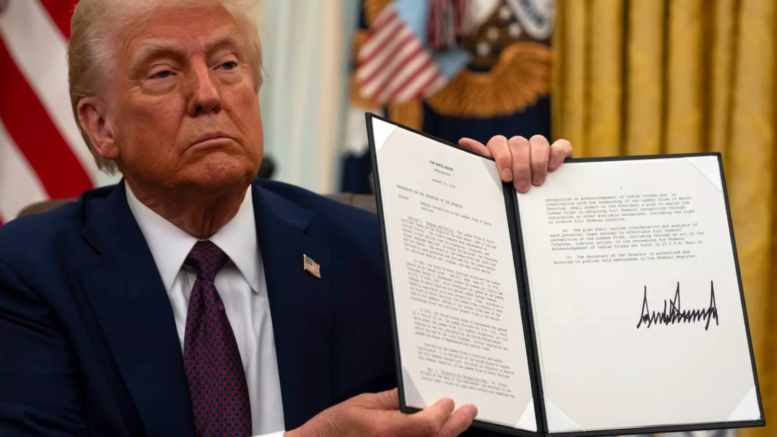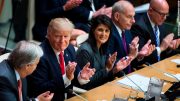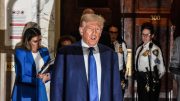Following his inauguration on January 20, 2025, Donald Trump issued a series of executive orders that significantly impacted various sectors, including education, international relations, and social policies. These orders help reflect the administration’s priorities in issues that they focus on, and have led to high debate nationwide.
Executive orders are a tool that presidents can use to enact policies without actually needing congressional approval. While they can be useful when it comes to implementing immediate change, they can also be controversial and lead to scrutiny from political opponents, advocacy groups, and the judiciary. Since the beginning of Trump’s second term, a variety of orders have been put in place. This article will go over some of the main orders enacted.
Executive Order: “Keeping Men Out of Women’s Sports”
On February 4, 2025, President Trump signed an executive order titled “Keeping Men Out of Women’s Sports.” This order mandates that federal agencies enforce Title IX based on gender assigned at birth, which effectively prevents transgender athletes from participating in specifically women’s sports. The Department of Education is authorized to withhold federal funding from schools that allow transgender athletes to compete in female sports categories. The order also warns the International Olympic Committee to exclude transgender athletes from the 2028 Summer Olympics. One of the main arguments against this order is that this policy discriminates against transgender individuals and also violates civil rights protections.
Executive Order: “Withdrawing the United States from and Ending Funding to Certain United Nations Organizations and Reviewing United States Support to All International Organizations”
In early February 2025, President Trump issued an executive order directing the reevaluation of US involvement in specific United Nations (UN) organizations, including the UN Human Rights Council (UNHRC), the UN Educational, Scientific, and Cultural Organization (UNESCO), and the UN Relief and Works Agency for Palestine Refugees in the Near East (UNRWA). The order requires the stopping of US participation in the UNHRC and also prohibits federal agencies from allocating funds to UNRWA. Additionally, it asks for a review of all international intergovernmental organizations and treaties in order to properly assess their alignment with US interests.
Executive Order: “Imposing Duties to Address the Synthetic Opioid Supply Chain in the People’s Republic of China”
On February 1, 2025, President Trump signed an executive order imposing additional tariffs on imports from China, Canada, and Mexico under the International Emergency Economic Powers Act (IEEPA). This action responds to specifically concerns over fentanyl trafficking and illegal immigration. The order aims to prevent the synthetic opioid supply chain that comes from China and addresses related national security issues as well.
Executive Order: “Ending Radical And Wasteful Government DEI Programs And Preferencing”
In February 2025, Trump announced an executive order terminating Diversity, Equity, and Inclusion (DEI) mandates at the federal level. The order states that the US government will recognize only two genders, male and female, and eliminates DEI programs within federal agencies. This policy shift has been incredibly controversial and criticized by many – especially civil rights groups, as it goes against efforts to promote inclusivity and protect the rights of marginalized communities.
Conclusion
Trump’s 2025 executive orders are a representation of his administration’s beliefs in reshaping policies that have existed for years, including social issues, international relations, and federal governance. While supporters view these actions as reforms that will help society, many have concerns about potential infringements on civil rights as well as the implications for the United States’ role in the global community.
Additionally, many of these executive orders will likely face legal challenges. Civil rights organizations and advocacy groups have already announced plans to challenge the orders related to transgender athletes and DEI policies, arguing that they violate constitutional protections. Many lawsuits have already come out against these executive orders, with dozens of rulings taking place all over the country. Similarly, Trump’s directive to withdraw funding from UN organizations may be met with resistance from Congress. Adding onto that, international trade partners may challenge the new tariffs through legal mechanisms (such as the World Trade Organization).
As Trump’s executive orders are put into place, there’s a lot of uncertainty on what comes next. Many of these policies will face pushback from a variety of communities, and many have already started causing effects in different industries. Ultimately, the executive orders are a representation of the true priorities of this administration, and the changes that are made as a result will undoubtedly lead to rippling effects in the US for years.






Be the first to comment on "Trump’s 2025 Executive Orders: Policy Shifts and Controversies"